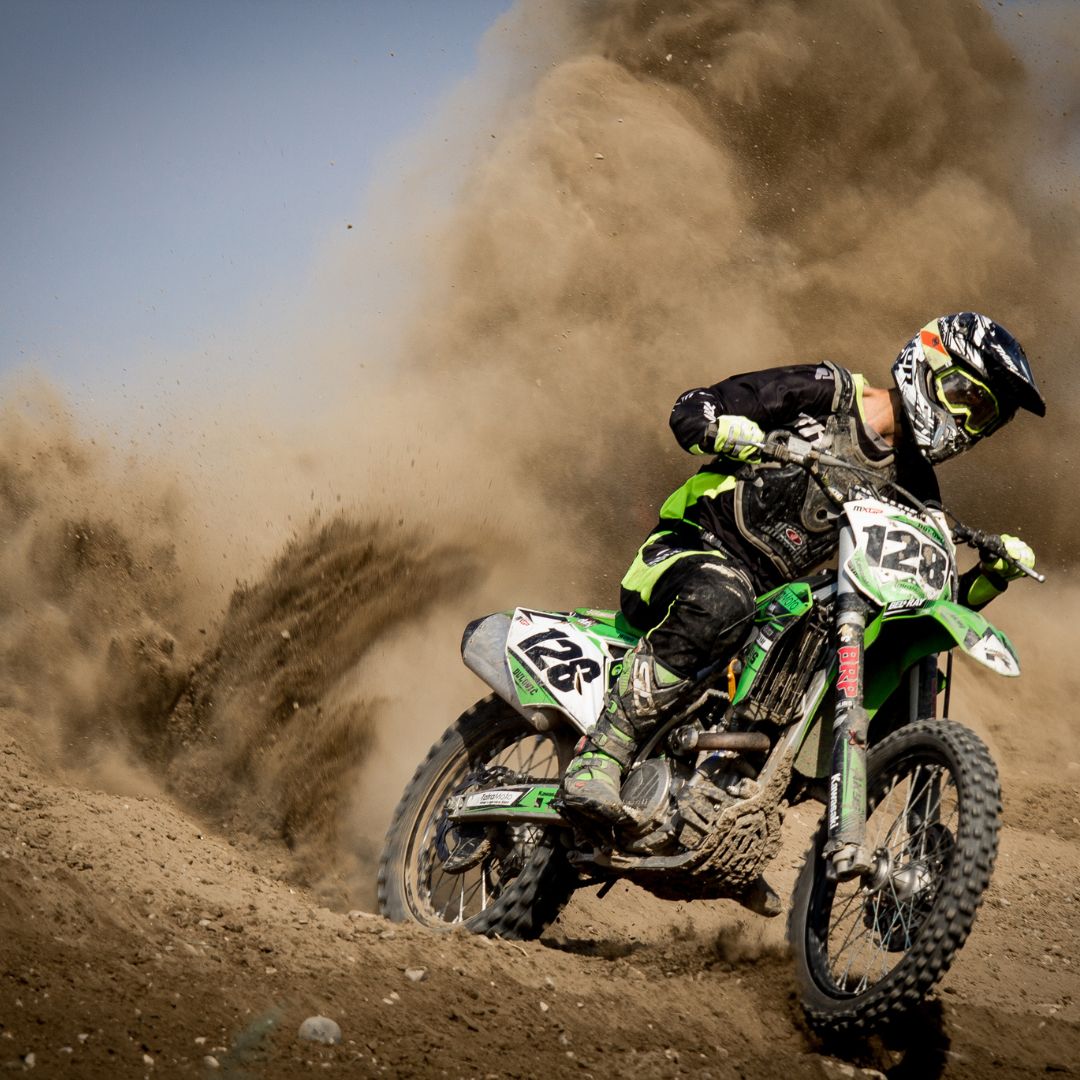
Updated: 24.5.25
Motocross combines speed, skill, and adrenaline—making it one of the most exhilarating sports for teens with a passion for dirt bikes. But how do you go from being a weekend rider to a full-blown pro?
In this guide, we break down everything a teenager needs to know about going pro in motocross, from early training and safety, to racing techniques, mindset, sponsorships, and building a professional brand.
Start with a Strong Foundation
Begin Early (If You Can)
Many professional riders start between ages 4 and 8, gaining years of experience by their teens. However, starting later is still possible with enough passion, discipline, and focused training.
Get Professional Coaching
Enrolling in motocross schools or clinics can fast-track your skill development. Coaches can provide tailored feedback and help you avoid bad habits early on.
Related: How To Get Your Child Started In Motocross

Master Safety and Gear First
Invest in the Right Gear
Helmet, gloves, boots, goggles, jersey, and pants—all are essential. Never skimp on quality gear.

Keep Your Bike in Top Shape
Routine checks and maintenance keep you safe and competitive. As you progress, ensure your bike evolves with your skill level.
Know the Risks
Motocross is thrilling but inherently risky. Understand the most common injuries, ride within your limits, and respect the track and your body.
Sharpen Your Skills
Drill the Fundamentals
Balance, body positioning, clutch and throttle control, braking, and cornering—mastery of these sets the foundation for speed and confidence.
Practice with Purpose
Structure your sessions. Focus on key skills each day. Record laps, track progress, and set specific training goals.
Use Tech to Improve
Simulators, helmet cams, and coaching apps can break down your technique and help you improve faster.
Train Your Mind
Be a Good Sport
Respect others on the track and off. Professionalism is just as important as podium finishes.
Discipline and Patience
Sticking to a training schedule, eating right, and managing expectations are what keep pros going—even when results don't come easy.
Set Realistic Goals
Track your progress with measurable goals: cutting lap times, qualifying for races, or improving strength. Celebrate milestones along the way.
Supplemental Activities That Help
Try Mountain Biking
Mountain biking builds stamina, balance, and bike handling on off-road terrain—perfect cross-training for motocross.
Parental Support
Parents can play a huge role—helping with logistics, encouragement, and keeping school-life balance in check.
The Core Skills Every Pro Needs
Top Physical Fitness
Motocross is grueling. You need strength, stamina, flexibility, and injury prevention to keep performing.
Elite Focus & Mental Resilience
Staying calm, thinking fast, and bouncing back from setbacks define top-tier riders.
Race-Specific Skills
Cornering, jumping, and starts are where races are won. Study pros, watch footage, and practice relentlessly.
Step into the Pro World
Start Competing
Local races are your proving ground. Use them to gain experience and exposure.
Understand Sponsorships
Get familiar with what brands want: results, professionalism, and a solid image.
Build Your Brand
Own Your Online Presence
Create social media accounts and post regularly about your journey. Share highlights, training, and your personality.
Mind Your Social Media Etiquette
Keep it clean, positive, and professional. Brands and fans notice.
Create a Personal Website
A digital hub for sponsors and fans. Include race results, bio, videos, and contact info.
Network Like a Pro
Engage with the Community
Join clubs, attend events, and connect with riders, coaches, and fans. Opportunities often come from who you know.
Be Active at Events
Whether racing or spectating, be visible, curious, and approachable.
Find Mentors
Experienced riders can fast-track your learning and open doors.
Conclusion
Becoming a pro motocross rider as a teenager isn’t just about riding fast—it’s about committing to a full lifestyle of training, safety, professionalism, and community.
With the right tools, mindset, and support, your dream of standing on the podium is within reach.
Ready to Ride? 🏁
Inspired to start your motocross journey? Check out our full range of kids' dirt bikes and motocross gear built for every age and skill level.





Share:
Which Mercedes Kids Ride on Car Should I Choose And Why?
At What Age Can Kids Start Go Karting?